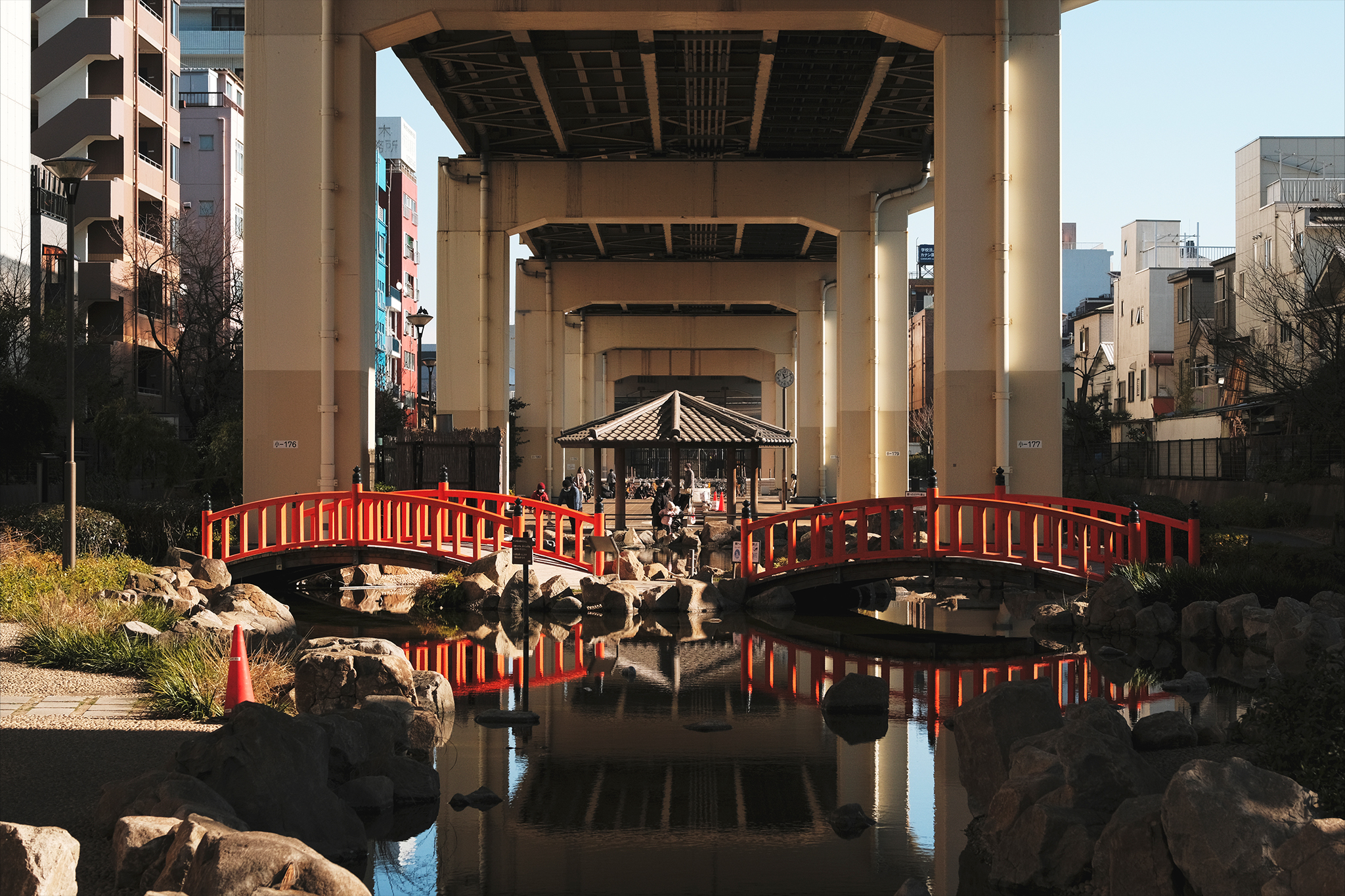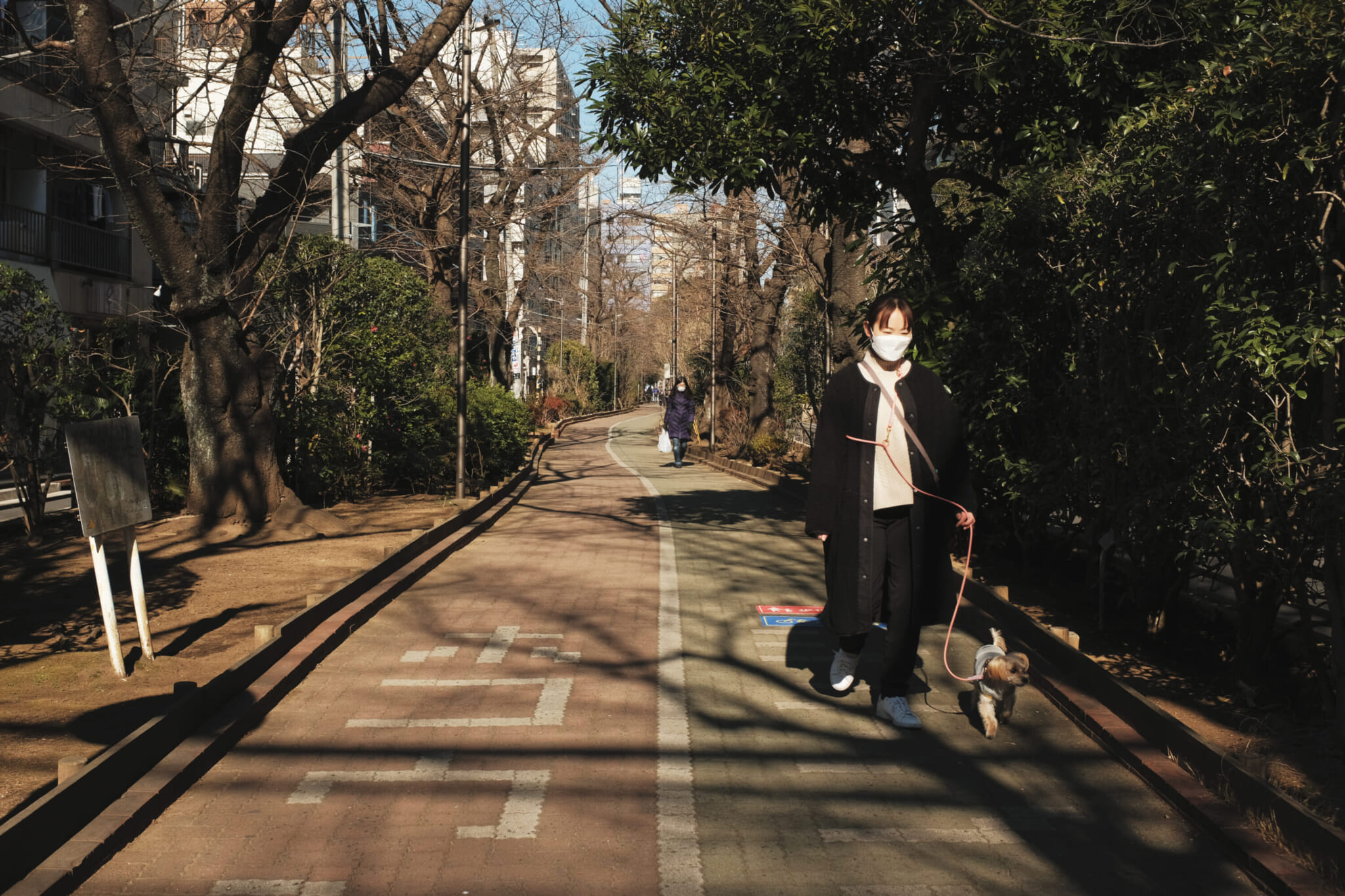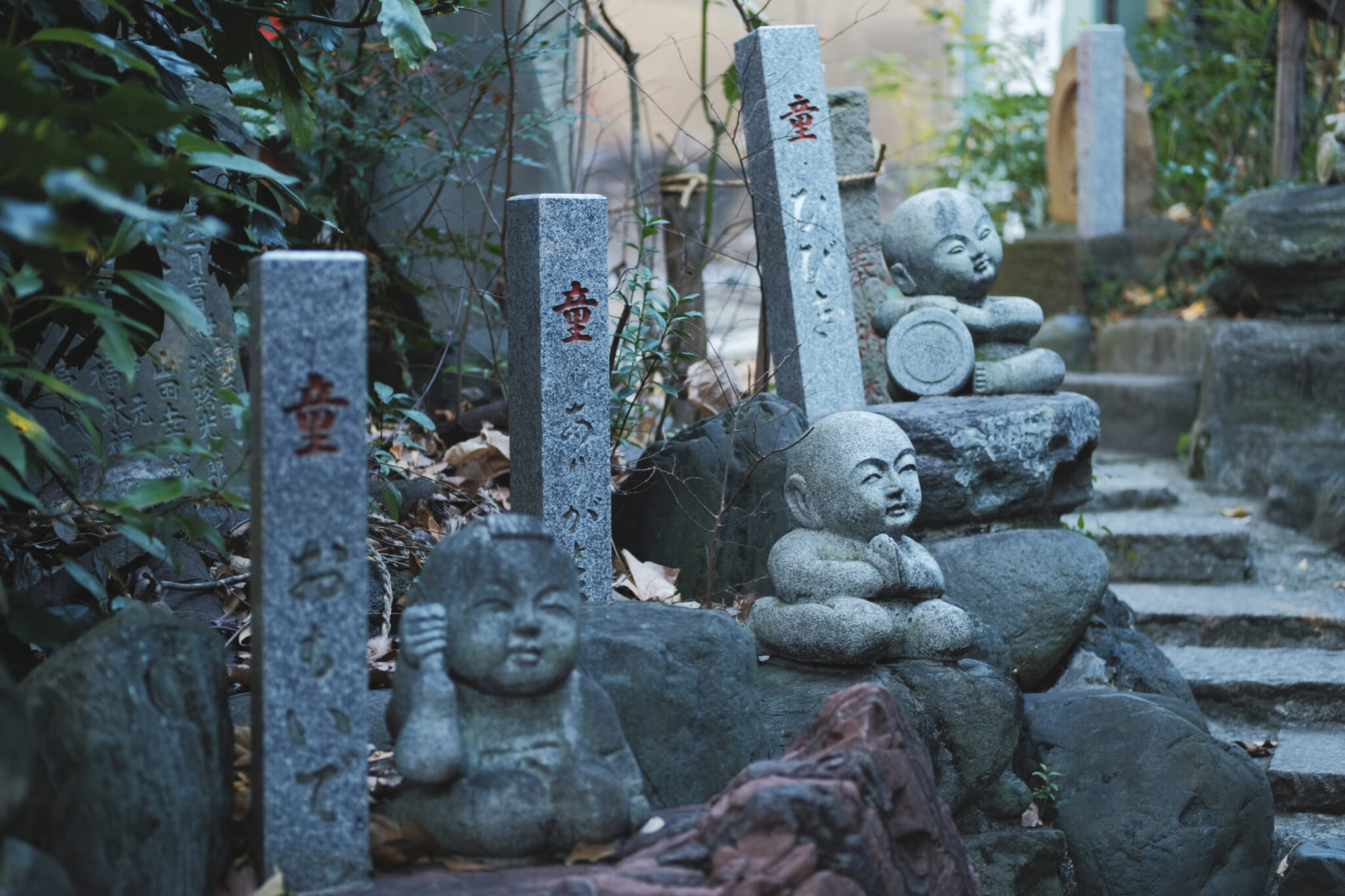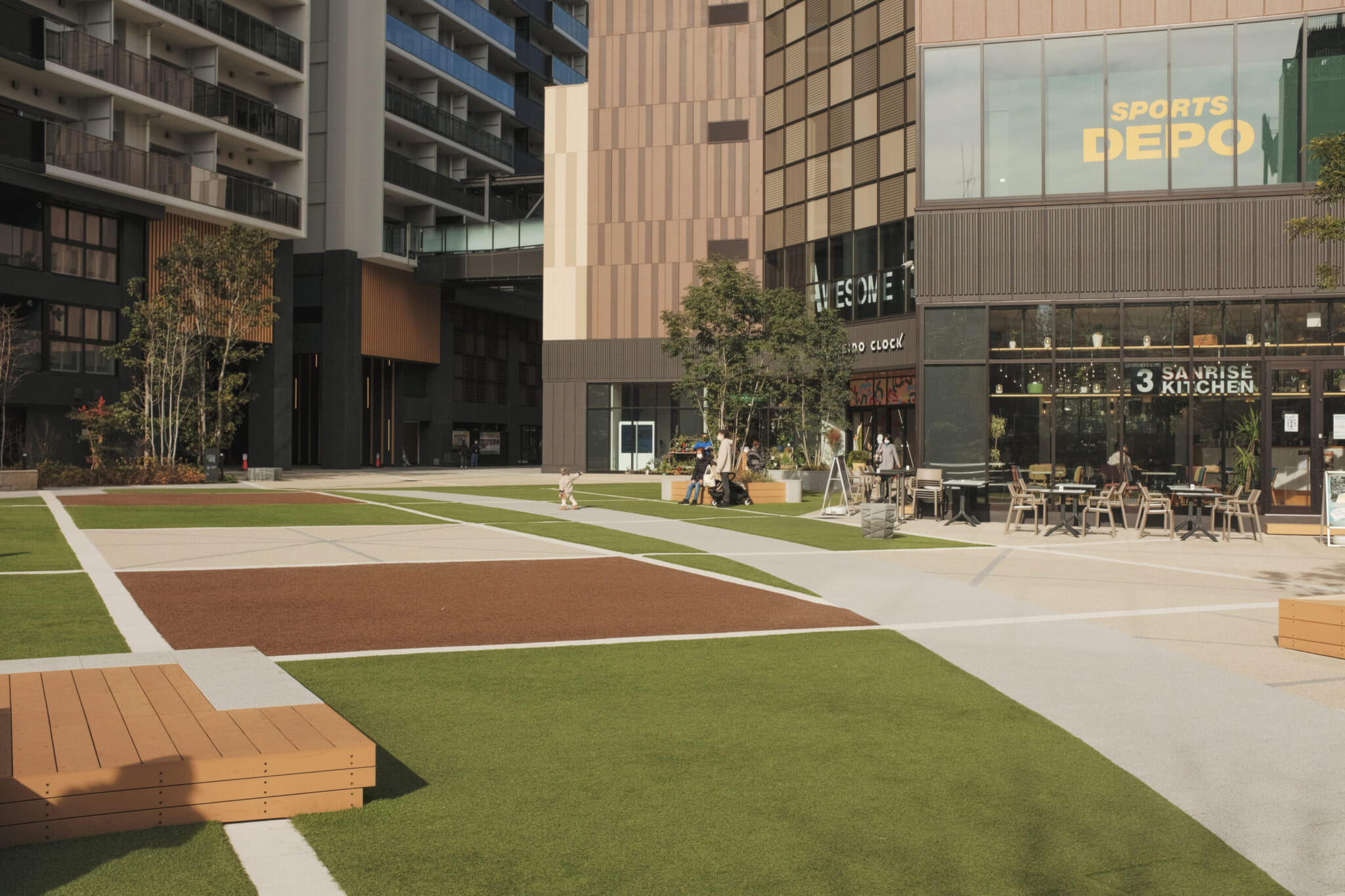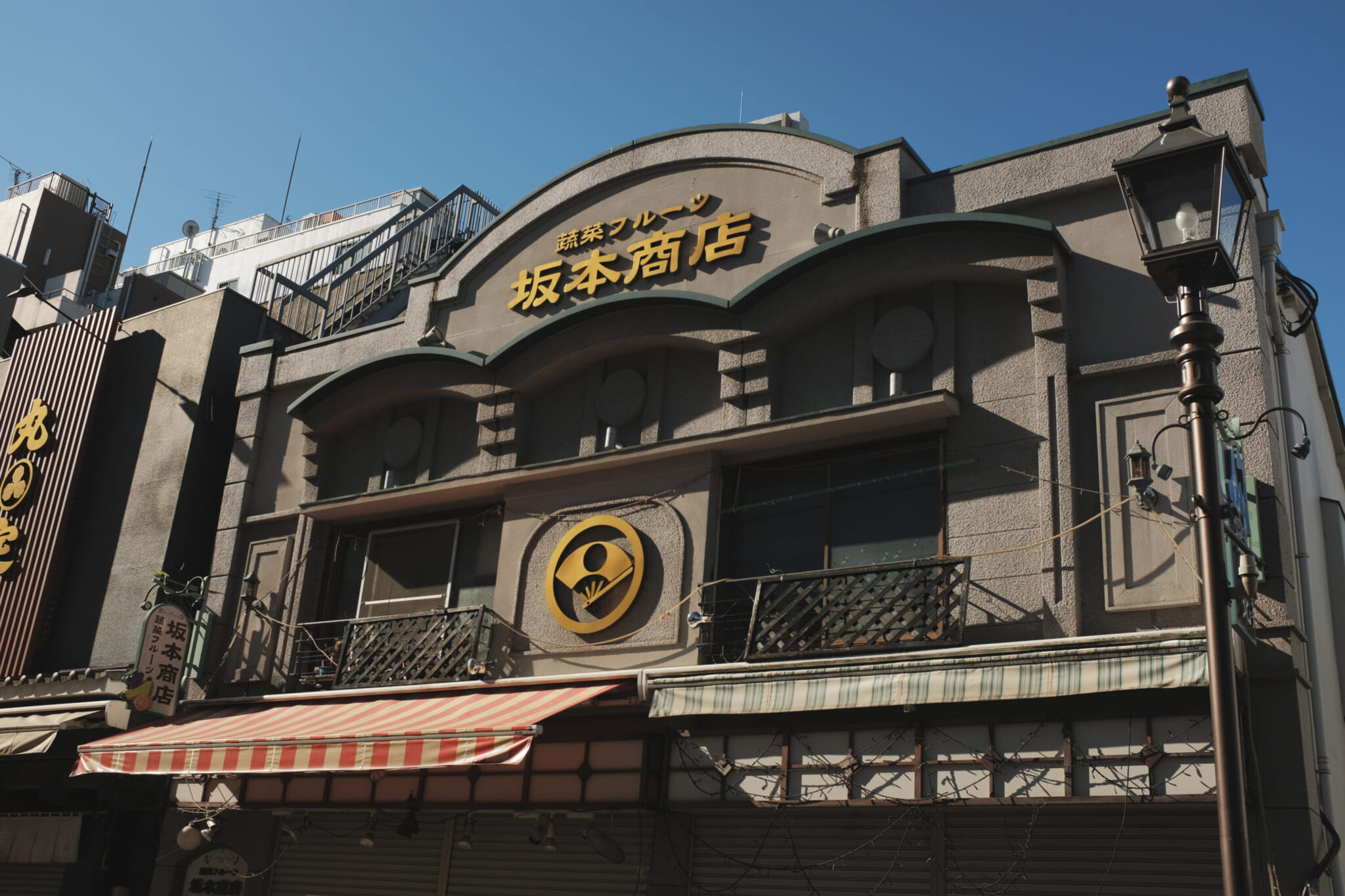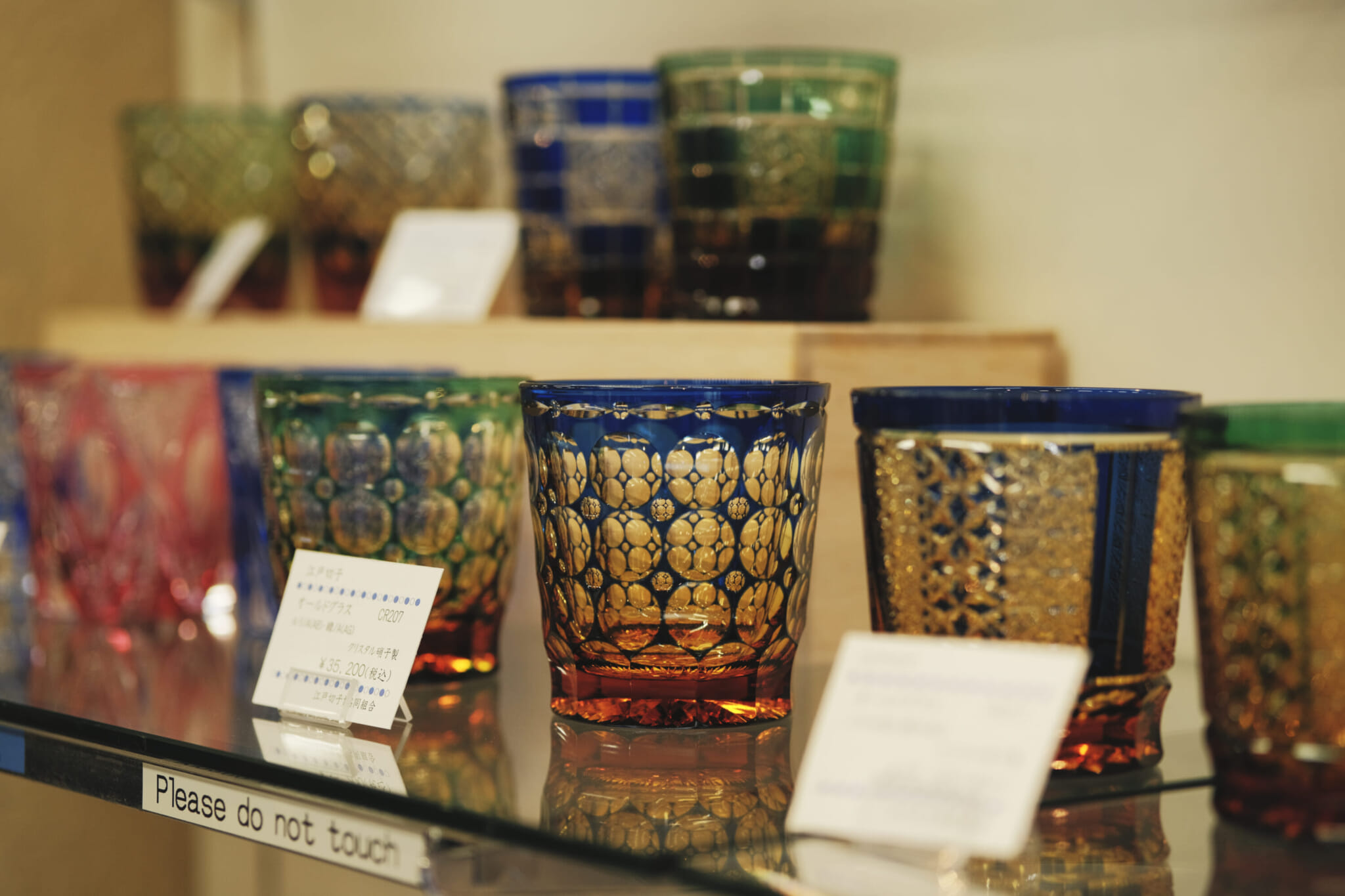Home to establishments with deep roots and awash with turtle motifs acknowledging the area’s alleged origins as a turtle-shaped island, the shitamachi neighborhood of Kameido is a great example of the quiet revival that many eastern suburbs have been undergoing in recent years.
Turtle Power
Kameido’s most notable landmark is Kameido Tenjin Shrine, a popular place to pray for academic success. First built in the mid-1600s and famous for its twin red drum bridges that traverse a turtle- and koi-filled pond, the shrine really comes alive in spring when gorgeous hanging wisterias come into bloom. The Plum Festival from mid-February through early March and the Chrysanthemum Festival from late October through late November are also great times to visit this colorful location.
Other picturesque places of worship include the secluded Koto Tenso Shrine and Ryugenji, a Buddhist temple with an immaculate rock garden and a tranquil tree-lined path running alongside a koi-filled pond. Sporty types will also want to stop by Kameido Katori Shrine (also known as the Sports Shrine) to pray for success and draw energy from the Katsuishi Stone. The shrine is a popular destination for Japanese athletes and is also home to a gigantic monument in the shape of a white radish, signifying the importance of Kameido daikon, a brand name for radish from the area that became well known in the Meiji period.
For a pleasant, cherry blossom tree-lined route through the neighborhood, head to Kameido Ryokudo Park, a thoroughfare connecting Kameido and Ojima. The pathway was once a Toden streetcar track that shuttled commuters from the eastern suburbs towards the city center but was dismantled in the 1970s. However, successful lobbying by locals preserved the memory of the route, with some of the original tracks still visible at the Kameido end.
Retro Wares
There are plenty of places to shop in Kameido, particularly for traditional delicacies. One area exuding retro charm is Kameido Katori Kachiun Shopping District, which is lined with distinct buildings reminiscent of the Showa Period (1926–1989). In stark contrast is Kameido Clock, the recently opened retail and residential complex that caters to the prosperous singles and families with young children that the area is keen to attract. The new mall has plenty of green space where kids and families can relax and a dining area with retro stylings and restaurants that bleed into each other to help facilitate a lively dining experience. Beer lovers will enjoy the inclusion of Beer-Ma, famed for having one of the largest selections of bottled and canned craft beer in Japan.
Another highlight is the faux-Edo structure of Kameido Umeyashiki, which takes its name from the plum wood and estate that was a major tourist attraction in the Edo period and depicted in a well-known ukiyo-e print by Hiroshige. The facility combines an information center, multipurpose hall and gift shop selling, among other things, various turtle-shaped souvenirs and snacks. Visitors can also purchase Edo Kiriko, intricately engraved, colorful glassware that is also a Kameido specialty thanks to many of the masters of the craft being based in the neighborhood. For more examples of these stylish wares, head over to the Hanashyo studio, one of the premier names in the art today.
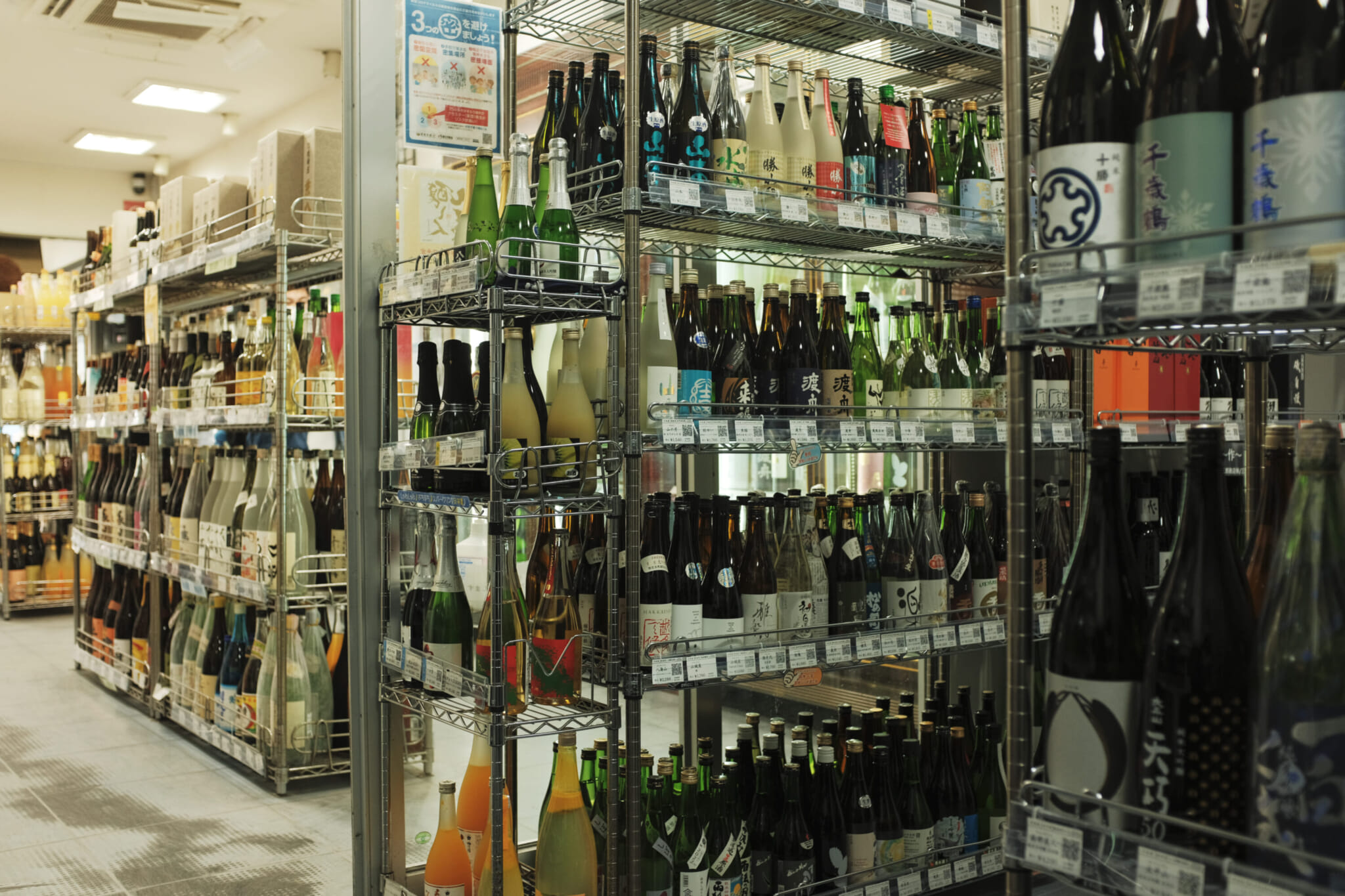
Hasegawa Saketen Kameido
Guts and Gyoza
For a true shitamachi experience, there are plenty of hole-in-the-wall eateries and bars oozing with warm, cozy shitamachi charm located in the alleyways around the station. One of the most popular establishments is Kameido Gyoza. Exemplifying simplicity, the menu consists of one menu item: fried gyoza. The plates, with five dumplings each for a mere ¥300, are constantly topped up by the eagle-eyed energetic staff until you’ve had your fill.
Other local favorites include Torisawa Kameido for succulent, creatively seasoned and prepared chicken and Kameido Horumon, a deceptively shabby-looking eatery serving expertly seasoned offal freshly sourced from the Tokyo Central Meat Wholesale Market every morning. For dessert, head to the main branch of Funabashiya, a well-known Japanese confectionery specializing in kuzumochi (kudzu starch cake) and anmitsu (syrup-covered red beans, agar cubes and fruit) that’s been in business since 1805.
For a light lunch, sample miso soup from a selection sourced from across the country at Sano Miso Kameido Honten’s eat-in café. The store has barrels of various pastes lined up and labeled with information regarding taste and origin, helpfully also in English.
The friendly and knowledgeable staff are on hand for advice, and the in-house supermarket is stacked with tasty treats to take home and try. Hasegawa Saketen Kameido is another celebrated chain with its origins in Kameido. The shop, a gold mine of domestic spirits, stocks a wide variety of both nihonshu and shochu, neatly organized by maker, area and price.
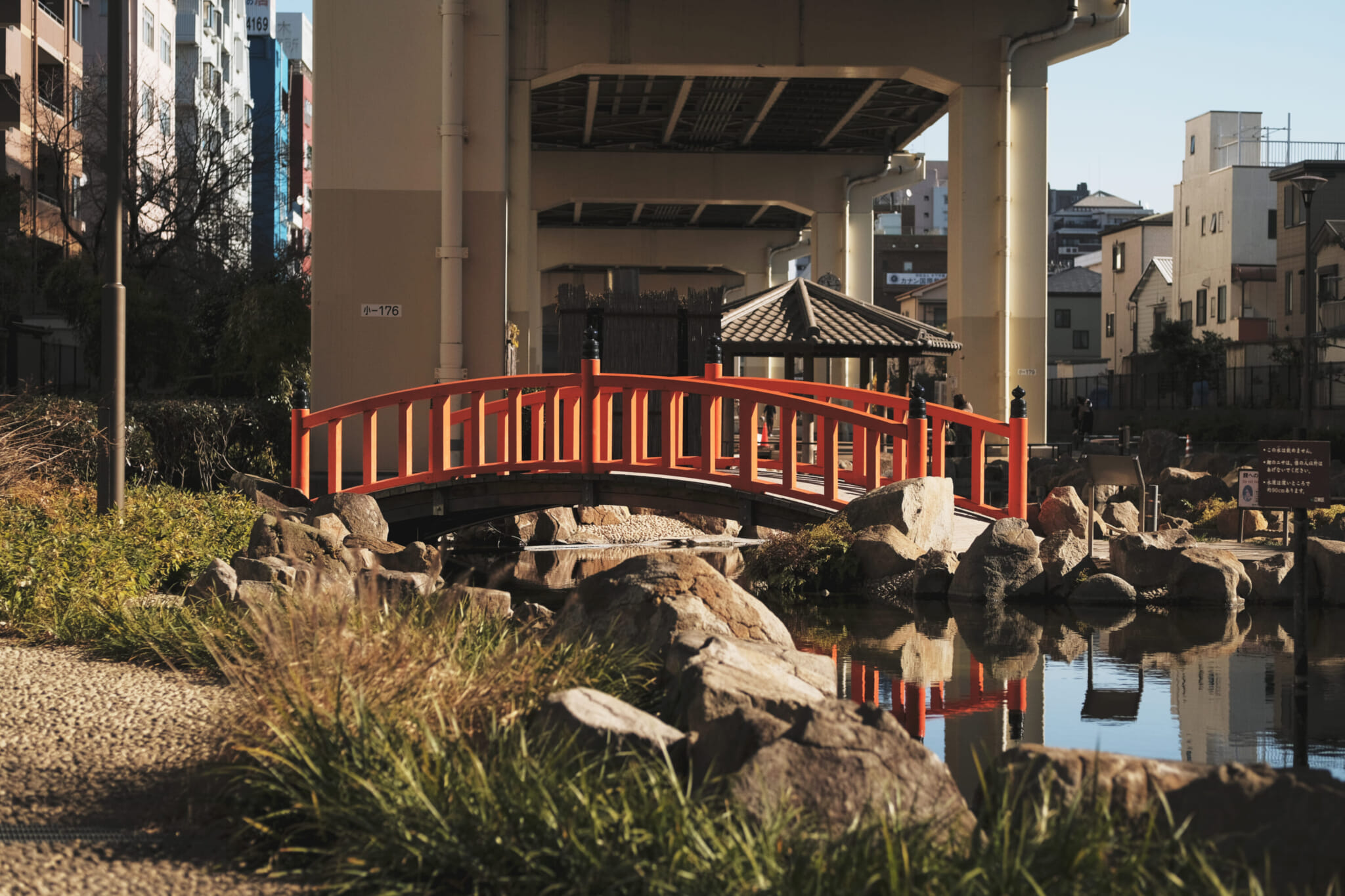
Tatekawa Kasenjiki Park
Get Fit
With a shrine dedicated to sports in the area, it should come as no surprise that there are plenty of places for sports and recreation. The biggest is Kameido Chuo Park, a sprawling green space with tennis courts, a baseball field and sports center. It’s also a great spot for springtime cherry blossom viewing. For a more left-field location, head over to Tatekawa Kasenjiki Park. Built under a stretch of elevated freeway, the park has futsal courts, children’s playgrounds, kayaking facilities, miniature golf and even a koi-filled pond with twin red bridges in homage to Kameido Tenjin Shrine.

